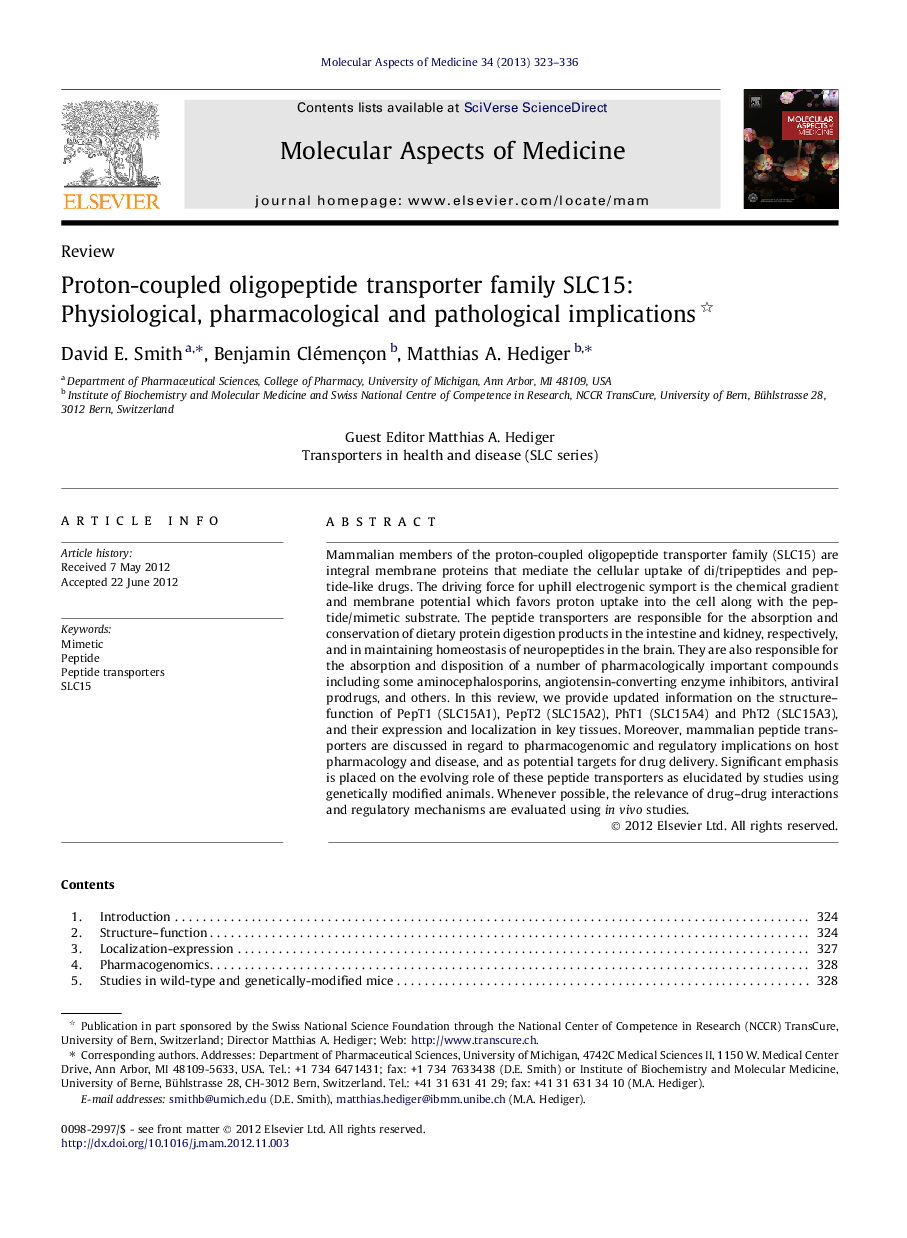| کد مقاله | کد نشریه | سال انتشار | مقاله انگلیسی | نسخه تمام متن |
|---|---|---|---|---|
| 8341531 | 1541453 | 2013 | 14 صفحه PDF | دانلود رایگان |
عنوان انگلیسی مقاله ISI
Proton-coupled oligopeptide transporter family SLC15: Physiological, pharmacological and pathological implications
دانلود مقاله + سفارش ترجمه
دانلود مقاله ISI انگلیسی
رایگان برای ایرانیان
موضوعات مرتبط
علوم زیستی و بیوفناوری
بیوشیمی، ژنتیک و زیست شناسی مولکولی
زیست شیمی
پیش نمایش صفحه اول مقاله

چکیده انگلیسی
Mammalian members of the proton-coupled oligopeptide transporter family (SLC15) are integral membrane proteins that mediate the cellular uptake of di/tripeptides and peptide-like drugs. The driving force for uphill electrogenic symport is the chemical gradient and membrane potential which favors proton uptake into the cell along with the peptide/mimetic substrate. The peptide transporters are responsible for the absorption and conservation of dietary protein digestion products in the intestine and kidney, respectively, and in maintaining homeostasis of neuropeptides in the brain. They are also responsible for the absorption and disposition of a number of pharmacologically important compounds including some aminocephalosporins, angiotensin-converting enzyme inhibitors, antiviral prodrugs, and others. In this review, we provide updated information on the structure-function of PepT1 (SLC15A1), PepT2 (SLC15A2), PhT1 (SLC15A4) and PhT2 (SLC15A3), and their expression and localization in key tissues. Moreover, mammalian peptide transporters are discussed in regard to pharmacogenomic and regulatory implications on host pharmacology and disease, and as potential targets for drug delivery. Significant emphasis is placed on the evolving role of these peptide transporters as elucidated by studies using genetically modified animals. Whenever possible, the relevance of drug-drug interactions and regulatory mechanisms are evaluated using in vivo studies.
ناشر
Database: Elsevier - ScienceDirect (ساینس دایرکت)
Journal: Molecular Aspects of Medicine - Volume 34, Issues 2â3, AprilâJune 2013, Pages 323-336
Journal: Molecular Aspects of Medicine - Volume 34, Issues 2â3, AprilâJune 2013, Pages 323-336
نویسندگان
David E. Smith, Benjamin Clémençon, Matthias A. Hediger,